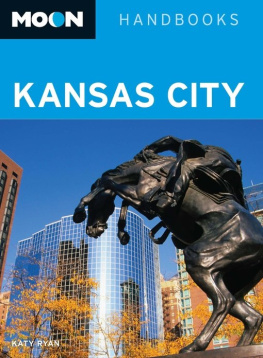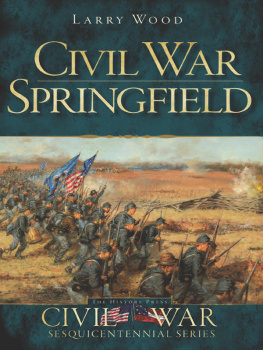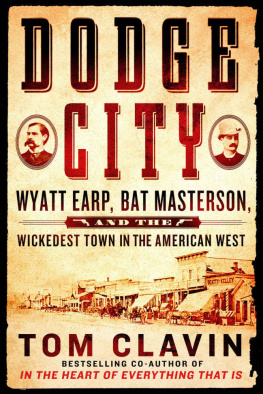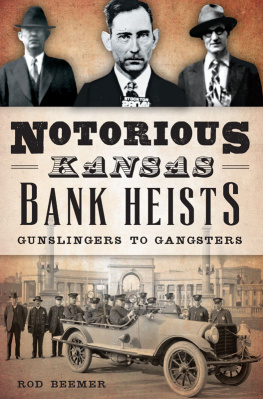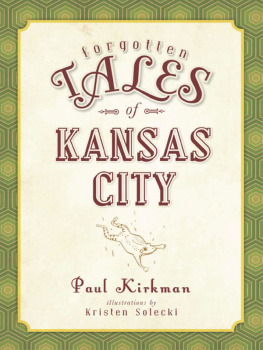


Published by The History Press
Charleston, SC
www.historypress.com
Copyright 2019 by Larry Wood
All rights reserved
Front cover, top: from the St. Louis Republic; bottom: Kansas State Historical Society.
First published 2019
E-Book edition 2019
ISBN 978.1.43966.649.4
Library of Congress Control Number: 2018963660
Print edition ISBN 978.1.46714.140.6
Notice: The information in this book is true and complete to the best of our knowledge. It is offered without guarantee on the part of the author or The History Press. The author and The History Press disclaim all liability in connection with the use of this book.
All rights reserved. No part of this book may be reproduced or transmitted in any form whatsoever without prior written permission from the publisher except in the case of brief quotations embodied in critical articles and reviews.
CONTENTS
Acknowledgements
Although much of my research for this book was done online, I still did quite a bit of it the old-fashioned way, and I want to thank Jason Sullivan and Patty Crane, reference librarians at the Joplin Public Library, for fulfilling my interlibrary loan requests.
Id like to thank Kristine Schmucker, curator of the Harvey County Historical Museum and Archives, for her insight into the Newton gunfight and for helping me with my research on that topic. I also thank her and the museum for providing a pertinent photograph.
I appreciate the timely manner in which Nancy Sherbert, photo archivist at the Kansas State Historical Society, responded to my several requests for photos from that organization.
I wish to thank Lindsey Givens, commissioning editor with Arcadia Publishing/The History Press, for her prompt and helpful answers to my inquiries as I prepared the manuscript and gathered the images for this book. I also appreciate copyeditor Rick Delaneys thorough proofreading and editing of the manuscript. His attention to detail has resulted in a more polished and professional finished product.
DEADLY DAY IN LADORE
A QUINTUPLE LYNCHING
On Tuesday, May 10, 1870, seven young men rode into Ladore, Kansas, looking to raise hell. The men were drawn by Ladores rough-andtumble reputation as a place where whiskey flowed freely and rowdy behavior generally went unchecked. But there were some things even the people of Ladore would not abide. When the seven young hellions got liquored up and crossed the line, only one made it out of town alive.
Located in southern Neosho County about six miles north of present-day Parsons, Ladore was, in the spring of 1870, a booming little town slated to become a junction point of the Missouri, Kansas and Texas Railroad (aka the Katy). The place pulsed with boisterous activity in anticipation of the roads completion, and all manner of debauchery and incivility found a home. Dramshops have multiplied, complained a local resident at the time, and drunken rowdies have become so bold that decent people are almost afraid to show their faces on the streets.
More than thirty years later, L.A. Bowes, foreman of the construction crew that was building the railroad, remembered the town in similar but more colorful terms. All the Wild Bills, Texas Jacks, Buckskin Joes and Alkali Ikes seemed to have congregated there, he recalled. It was the toughest placeI ever struck. Whisky was sold in nearly every house in the town. Vice and immorality flourished like a green bay tree.
The seven young men, identified initially only as Texans or straggling outlaws from the Indian Territory, hit town about noon, according to Bowes, and commenced to fill up on tangleleg. Heavily armed, the men took entire possession of the town. By evening, they started knocking people down and robbing them, firing off their pistols indiscriminately, and raising the devil generally.
About 9:00 p.m., the seven men went to the boardinghouse of James N. Roach, a quarter-mile south of town near the railroad right-of-way and asked for rooms. Seeing their state of intoxication, Roach told them he didnt have any rooms for them, but they retorted that they would stay anyway. The hardened wretches hit Roach with their pistols, knocking him down and leaving him for dead, as they presumed.
The hell-prompted villains then turned their attention to the female quarters on the bottom floor of the two-story building, where Roachs nineteen-year-old daughter, Sophia, and two hired girls, fourteen-yearold Jane Talbott and her thirteen-year-old sister, Alice Talbott, roomed. A number of railroad workers were staying on the second floor, and two of the hellions guarded the outside stairs that led to the workmens quarters to prevent them from interfering while the other five men stalked toward the girls room. Sophia made her escape by slipping into an adjoining room and hiding, but the drunken scoundrels dragged the Talbott sisters from their room and herded them outside, where they took turns raping them.
Still stunned but conscious, Roach could hear the screams of the young girls, but he dared not stir for fear that the men would kill him. During the night, an argument erupted among the desperadoes over one of the girls, and the leader of the gang shot and killed one of his own men.
Finally, the crying and screaming of the younger girl became so heartrending that even one of the gang members took pity on her and returned her to the boardinghouse. Meanwhile, the men brutally outraged and ravished the other.
Shortly after midnight, the villains broke up. One of the gang members took the Talbott girl to the nearby Labette Creek woods, where he wrapped her and himself in a blanket and soon fell asleep. Three others deemed it prudent to head out of town, and they started northeast on the Osage Mission road. The remaining two went looking for more liquor. Meanwhile, Roach finally ventured to give an alarm.
The two thirsty desperadoes called at The Inn, a boardinghouse in Ladore run by James Abell. They found Susan Abell and her daughters, fifteen-year-old Sarah Matilda and twelve-year-old Elizabeth, there alone, because Jim Abell had already answered the alarm and was out looking for the rapists with a posse of Ladores other male citizens. The Inn was closed, but the ruffians started breaking in. Susan picked up an ax and herded her daughters up a ladder into an unfinished attic. When the desperadoes gained entrance into the house and tried to follow the females into the attic, Susan fended them off with the ax, and they finally gave up and turned their attention to the liquor theyd come for.
About daylight, the posse, now swollen to almost three hundred men, found the man whod taken Jane Talbott to the woods, still curled up in his blanket with the girl. They first tried to hang him with a grapevine, but it broke. They then procured a rope and strung him up to a limb of a hackberry tree on the bank of Labette Creek.
Near the same time, the two desperadoes whod gone to Abells boardinghouse were found there in a drunken stupor. They were taken to the local barbershop, a log building, and guarded there momentarily, then brought down to the Roach place, where the Talbott girls identified them as two of the party who had attacked them. They were promptly strung up side by side on the same limb as their comrade.
Sometime after daylight, the other three men were overtaken on the Osage Mission road and brought back to Ladore. They, too, were marched before the Talbott girls, who identified two of them as participants in the previous nights crime. Alice Talbott said the third man was the one whod taken her back to the boardinghouse, and both girls agreed that he did not participate in the hellish deeds of the other six men. Identified as Peter Kelly, he was placed under guard pending further investigation, while his two partners soon adorned the hackberry tree alongside the other three men. It was not yet 11:00 a.m. on May 11, 1870.
Next page

